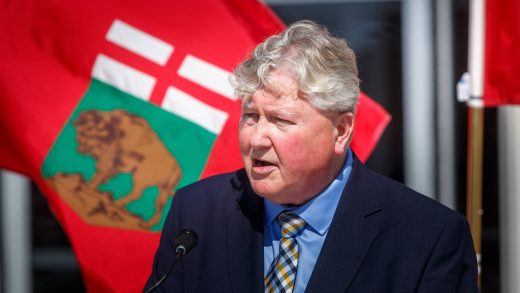Danish leader to quit in bid to form new Cabinet despite win

COPENHAGEN, Denmark (AP) — Voters in Greenland secured the last two seats necessary for the center-left bloc of Prime Minister Mette Frederiksen to win Denmark’s general election.
But Frederiksen plans to resign later Wednesday, because the Social Democratic leader wants to attempt to form a new government with broader support across the political divide — something she had suggested before the election.
The two seats in Greenland, an autonomous Danish territory, meant that the so-called red bloc of Frederiksen reached the required 90-seat majority and put her in a strong position after Tuesday’s tight election.
The Greenland results came in early Wednesday and the red side’s win was based on the assumption that a vote count in Greenland would give the autonomous Danish territory’s two seats to the center-left bloc.
Siumut and Inuit Ataqatigiit, two left-leaning groups, grabbed 37.6% and 24.6% of the votes, respectively. Four of the 179 seats in Denmark’s legislature, known as the Folketing, are reserved for Greenland and the Faeroe Islands, another autonomous Danish territory.
Frederiksen will formally hand in her resignation to Queen Margrethe at 11 a.m. (1000 GMT; 4 a.m. EDT) Wednesday after which talks to form a government — so-called queen rounds — are expected to begin with party leaders.
“It is also clear there is no longer a majority behind the government in its current form. Therefore, tomorrow I will submit the government’s resignation to the queen,” Frederiksen said Tuesday as she announced she would step down.
Margrethe’s role is largely ceremonial, but she performs certain official functions, including attending the opening of parliament, signing new laws, formally nominating a person to head the government-formation process and appointing the prime minister. Sometimes several “queen rounds” are needed before a new government can be formed.
Frederiksen was forced to call the vote earlier this month amid the fallout from her government’s contentious decision to cull millions of minks as a pandemic response measure. The cull and chilling images of mass graves of minks have haunted Frederiksen since 2020 and eventually led to cracks in the center-left bloc.
The Social Democrats remained Denmark’s top party with 27.54% of votes, but it remained unclear long into the night whether the center-left parties together would reach a majority. The decisive seat flipped at the very end of the vote count.
Before that, former Prime Minister Lars Løkke Rasmussen appeared set to become kingmaker. His newly formed centrist party won 9.27% of the vote for 16 seats, according to the preliminary results. Final results were expected later.
Løkke Rasmussen said he too wanted Frederiksen to try to form a government, but he wouldn’t provide support for her to remain “as prime minister.”
Løkke Rasmussen, a two-time government leader who lost the 2019 election to Frederiksen and abandoned the center-right Liberal party following an internal power struggle, wouldn’t say whom he would back as the next prime minister or whether he saw that role for himself.
“I know for sure that Denmark needs a new government,“ he told jubilant supporters in Copenhagen. “Who is going to sit at the end of the table? We do not know.”
Prior to the election, the 44-year-old Frederiksen floated the idea of a broader alliance that would also include opposition parties, but was rebuffed by opposition leaders Jakob Ellemann-Jensen of the Liberals and Søren Pape Poulsen of the Conservatives.
Even though the election result suggested she could ostensibly carry on as prime minster with only center-left support, Frederiksen said she would adhere to her ambition to also reach out to opposition parties.
“The Social Democrats went to the election to form a broad government,” she said on election night. “I will investigate whether it can be done.”
Frederiksen, who became Denmark’s youngest prime minister when she took office at 41 more than three years ago, teamed up with the opposition to hike NATO-member Denmark’s defense spending in the wake of Russia’s invasion of Ukraine. Her steadfast leadership during the COVID-19 pandemic was partly overshadowed by the mink-culling episode.
The decision to slaughter up to 17 million minks to protect humans from a mutation of the coronavirus was taken in haste and without the required legislation in place. It dealt a devastating blow to Danish mink farmers, even though there was no evidence the mutated virus found among some minks was more dangerous than other strains.
Credit: Danish leader to quit in bid to form new Cabinet despite win


